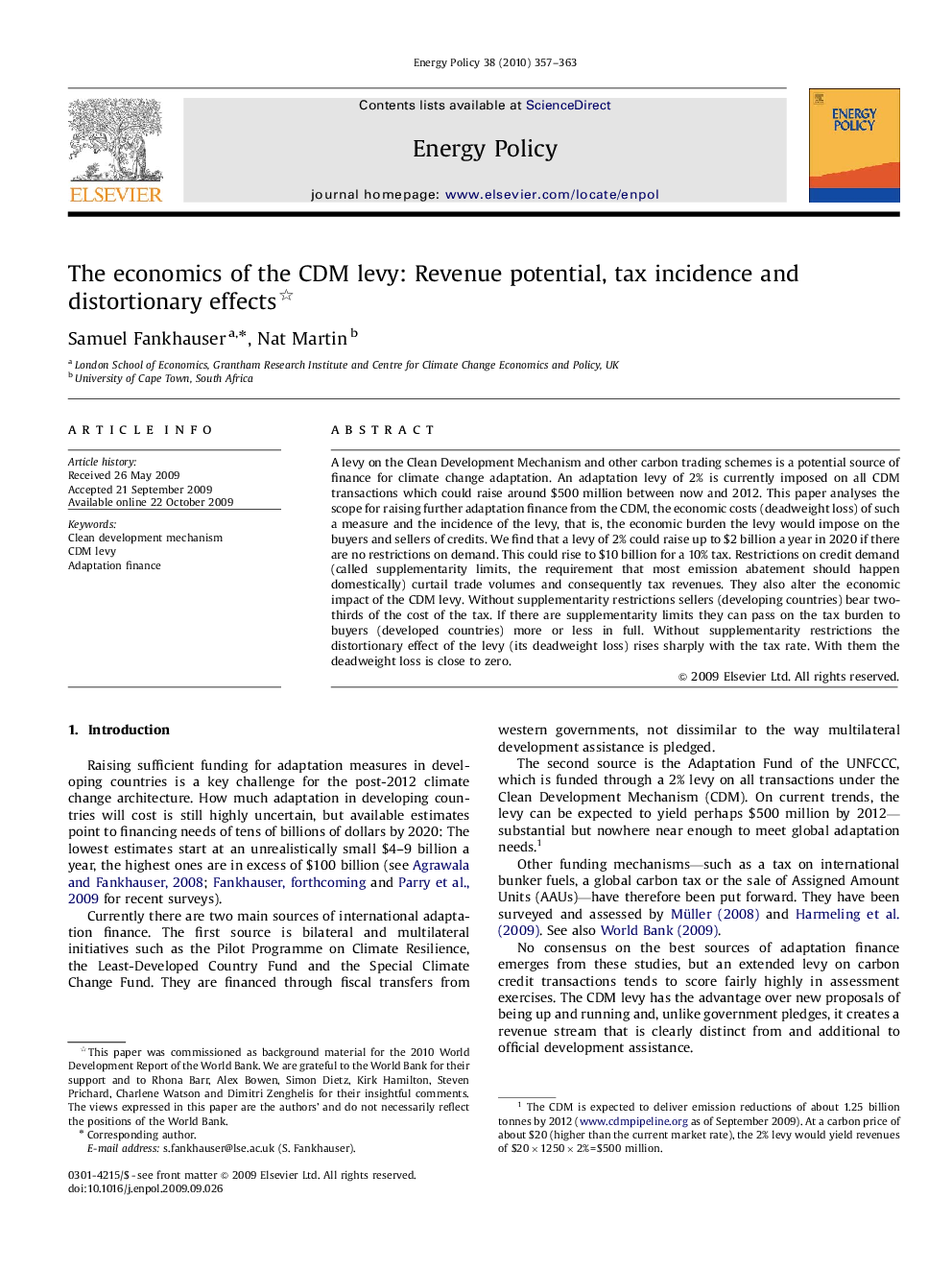| کد مقاله | کد نشریه | سال انتشار | مقاله انگلیسی | نسخه تمام متن |
|---|---|---|---|---|
| 995111 | 936168 | 2010 | 7 صفحه PDF | دانلود رایگان |
عنوان انگلیسی مقاله ISI
The economics of the CDM levy: Revenue potential, tax incidence and distortionary effects
دانلود مقاله + سفارش ترجمه
دانلود مقاله ISI انگلیسی
رایگان برای ایرانیان
کلمات کلیدی
موضوعات مرتبط
مهندسی و علوم پایه
مهندسی انرژی
مهندسی انرژی و فناوری های برق
پیش نمایش صفحه اول مقاله

چکیده انگلیسی
A levy on the Clean Development Mechanism and other carbon trading schemes is a potential source of finance for climate change adaptation. An adaptation levy of 2% is currently imposed on all CDM transactions which could raise around $500 million between now and 2012. This paper analyses the scope for raising further adaptation finance from the CDM, the economic costs (deadweight loss) of such a measure and the incidence of the levy, that is, the economic burden the levy would impose on the buyers and sellers of credits. We find that a levy of 2% could raise up to $2 billion a year in 2020 if there are no restrictions on demand. This could rise to $10 billion for a 10% tax. Restrictions on credit demand (called supplementarity limits, the requirement that most emission abatement should happen domestically) curtail trade volumes and consequently tax revenues. They also alter the economic impact of the CDM levy. Without supplementarity restrictions sellers (developing countries) bear two-thirds of the cost of the tax. If there are supplementarity limits they can pass on the tax burden to buyers (developed countries) more or less in full. Without supplementarity restrictions the distortionary effect of the levy (its deadweight loss) rises sharply with the tax rate. With them the deadweight loss is close to zero.
ناشر
Database: Elsevier - ScienceDirect (ساینس دایرکت)
Journal: Energy Policy - Volume 38, Issue 1, January 2010, Pages 357-363
Journal: Energy Policy - Volume 38, Issue 1, January 2010, Pages 357-363
نویسندگان
Samuel Fankhauser, Nat Martin,